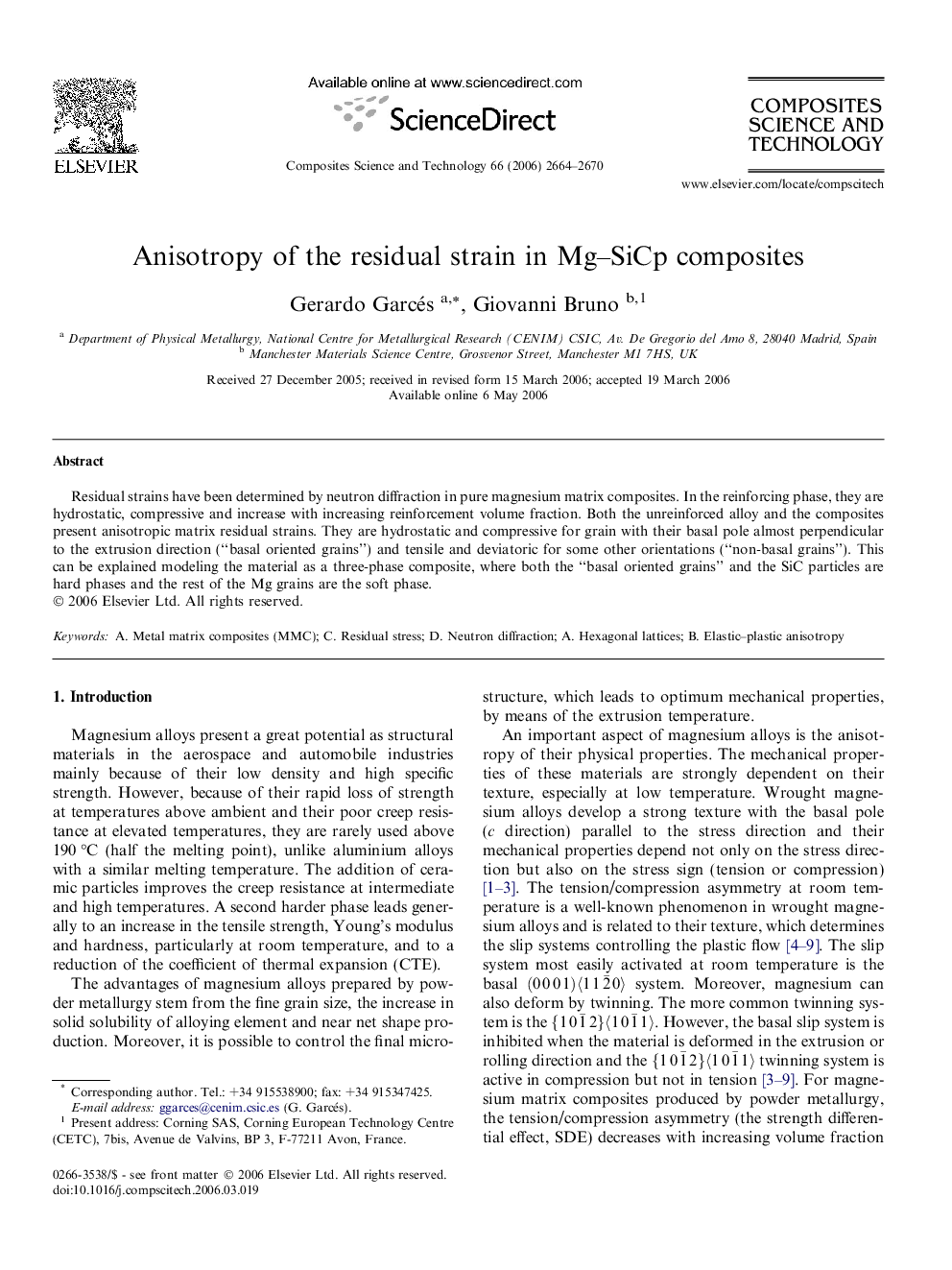| Article ID | Journal | Published Year | Pages | File Type |
|---|---|---|---|---|
| 822688 | Composites Science and Technology | 2006 | 7 Pages |
Abstract
Residual strains have been determined by neutron diffraction in pure magnesium matrix composites. In the reinforcing phase, they are hydrostatic, compressive and increase with increasing reinforcement volume fraction. Both the unreinforced alloy and the composites present anisotropic matrix residual strains. They are hydrostatic and compressive for grain with their basal pole almost perpendicular to the extrusion direction (“basal oriented grains”) and tensile and deviatoric for some other orientations (“non-basal grains”). This can be explained modeling the material as a three-phase composite, where both the “basal oriented grains” and the SiC particles are hard phases and the rest of the Mg grains are the soft phase.
Keywords
Related Topics
Physical Sciences and Engineering
Engineering
Engineering (General)
Authors
Gerardo Garcés, Giovanni Bruno,
